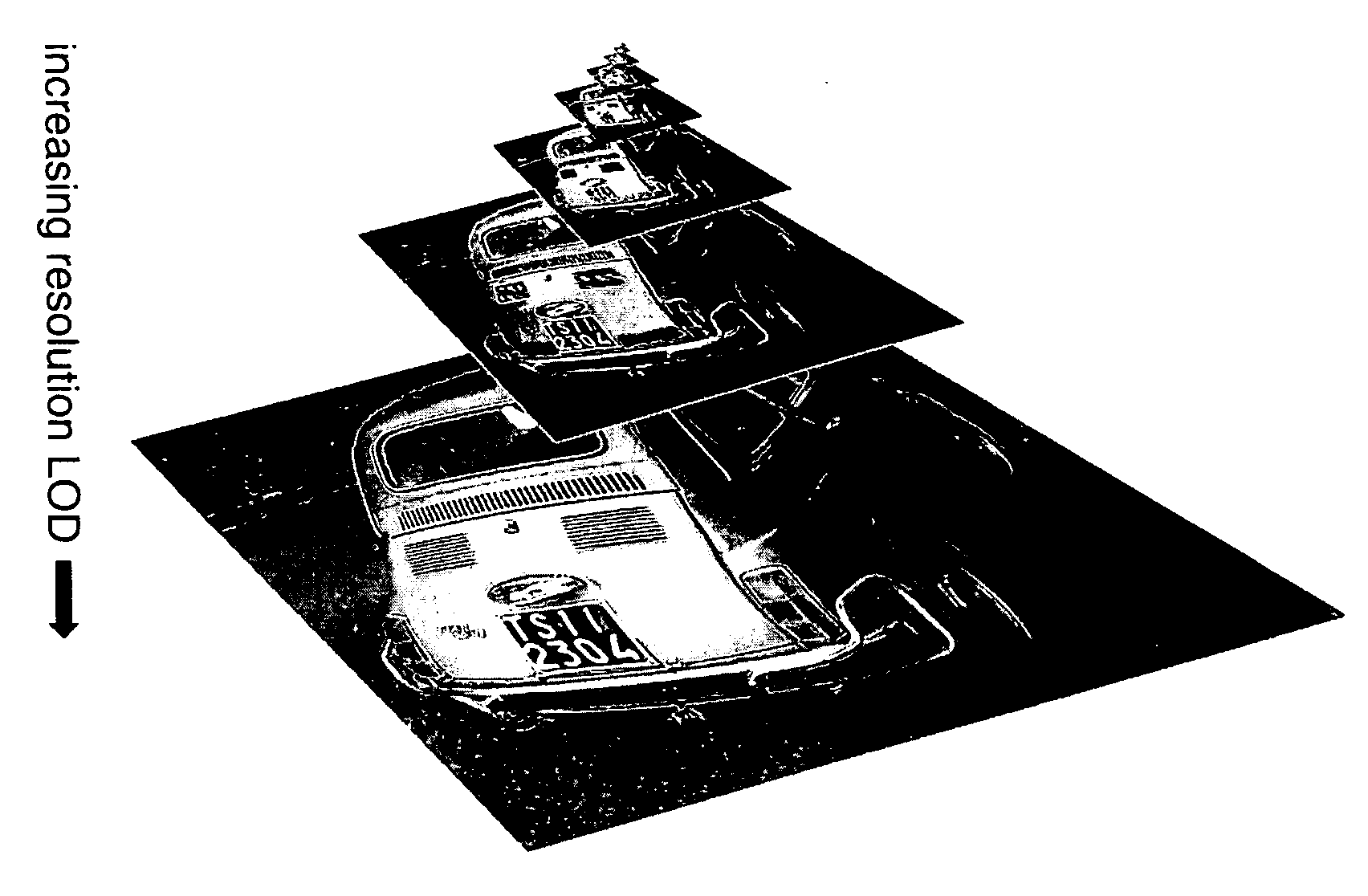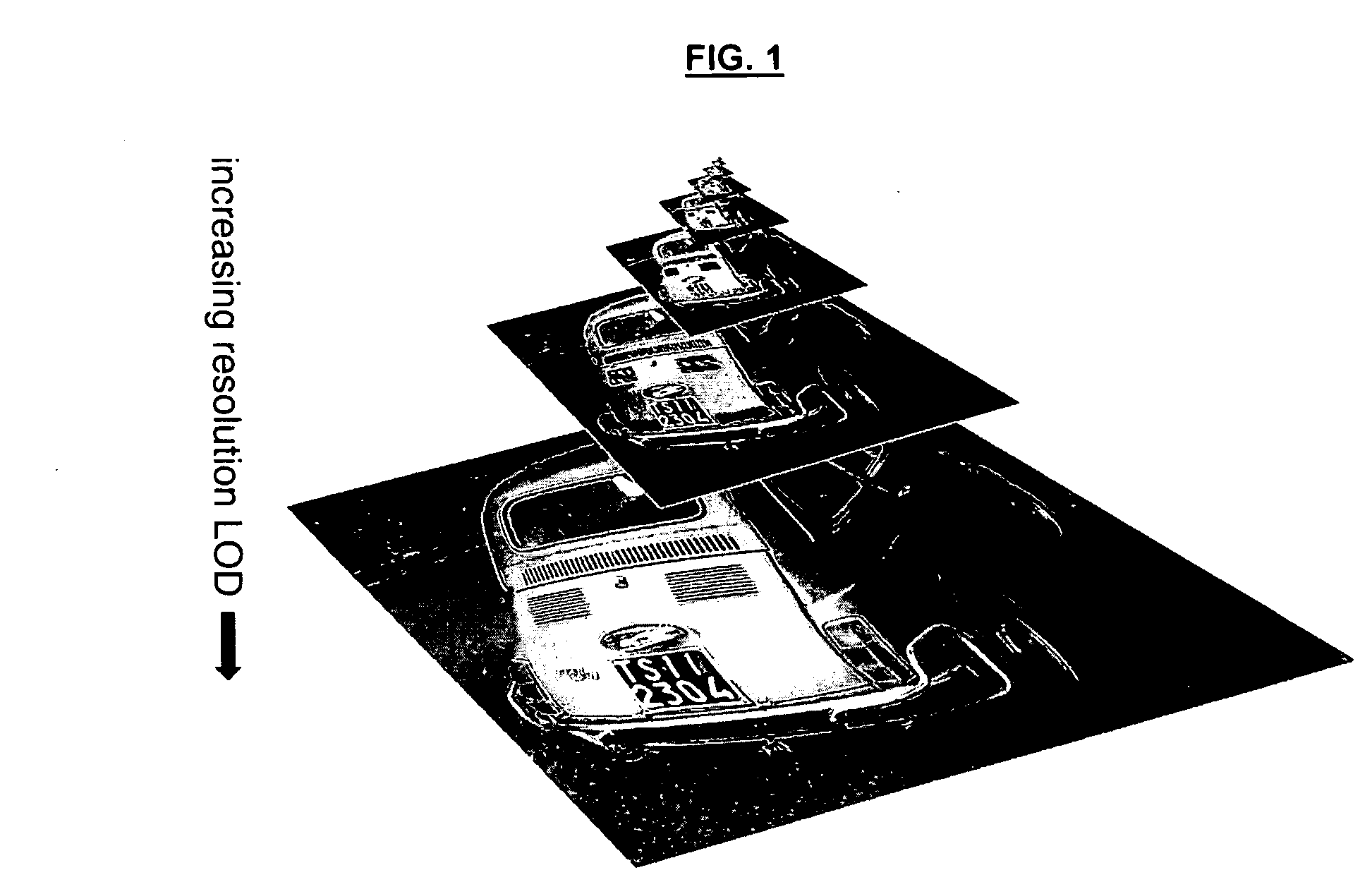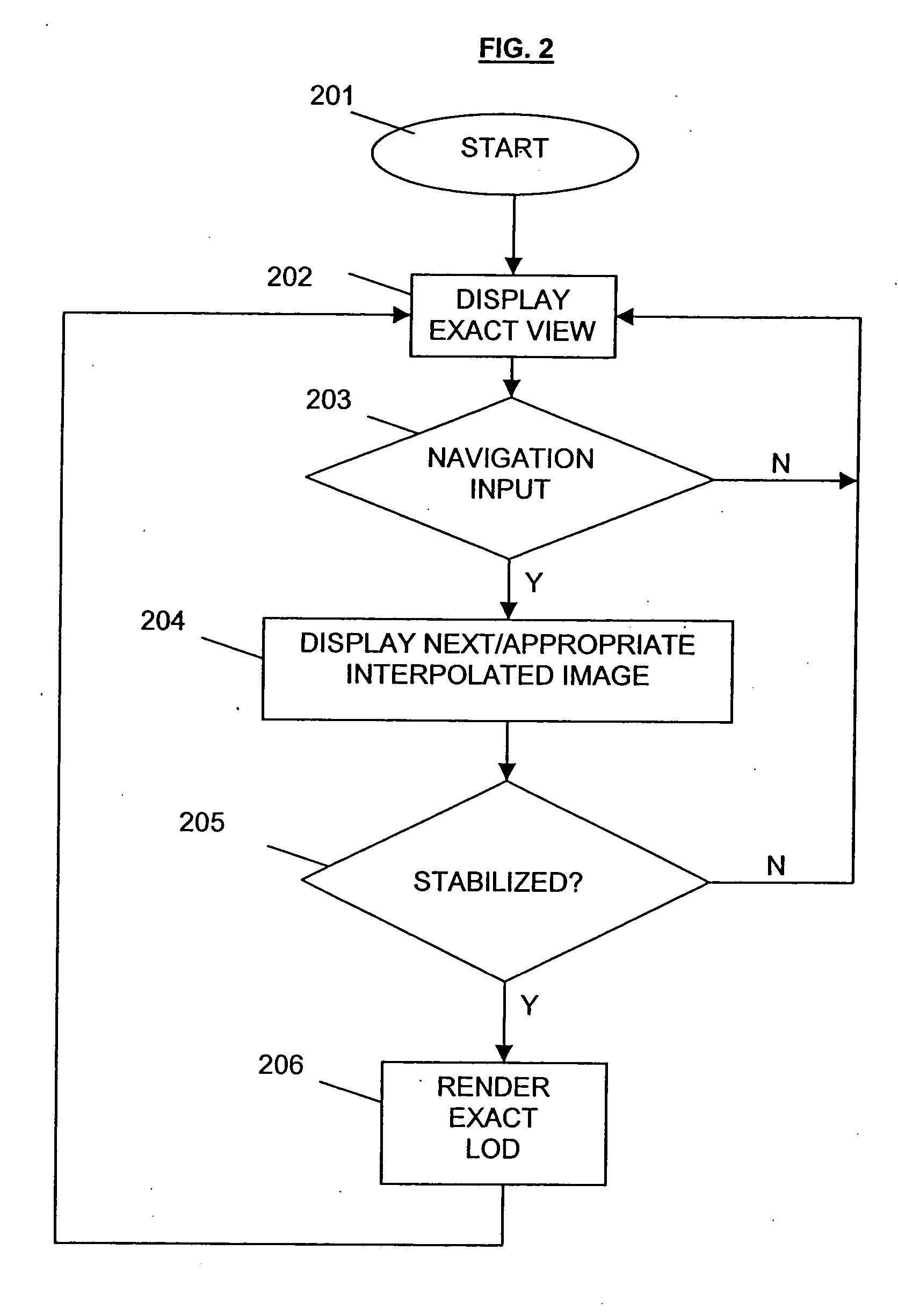System and method for exact rendering in a zooming user interface
a user interface and exact rendering technology, applied in the field of graphical zooming user interfaces, can solve the problems of inability to accurately calculate the resolution of the visual content in real time as the user zooms, inability to accurately display the visual content, and unrealistic final image, etc., and achieve the effect of less computation
- Summary
- Abstract
- Description
- Claims
- Application Information
AI Technical Summary
Benefits of technology
Problems solved by technology
Method used
Image
Examples
Embodiment Construction
[0032]FIG. 2 shows a flowchart of a basic technique for implementation of the present invention. The flowchart of FIG. 2 represents an exemplary embodiment of the invention and would begin executing when an image is displayed at an initial resolution. It is noted that the invention may be used in the client / server model, but that the client and server may be on the same or different machines. Thus, for example, there could be a set of discrete LODs stored remotely at a host computer, and the user can be connected to said host through a local PC. The actual hardware platform and system utilized are not critical to the present invention.
[0033] The flowchart is entered at start block 201 with an initial view of an image at a particular resolution. In this example, the image is taken to be static. The image is displayed at block 202. A user may navigate that image by moving, for example, a computer mouse. The initial view displayed at block 202 will change when the user navigates the i...
PUM
 Login to View More
Login to View More Abstract
Description
Claims
Application Information
 Login to View More
Login to View More - R&D
- Intellectual Property
- Life Sciences
- Materials
- Tech Scout
- Unparalleled Data Quality
- Higher Quality Content
- 60% Fewer Hallucinations
Browse by: Latest US Patents, China's latest patents, Technical Efficacy Thesaurus, Application Domain, Technology Topic, Popular Technical Reports.
© 2025 PatSnap. All rights reserved.Legal|Privacy policy|Modern Slavery Act Transparency Statement|Sitemap|About US| Contact US: help@patsnap.com



